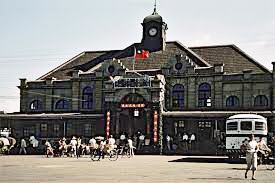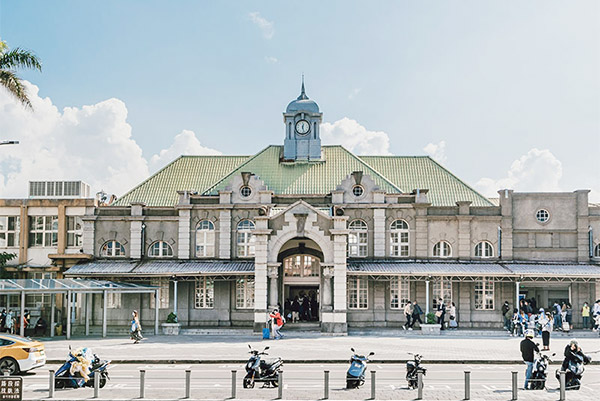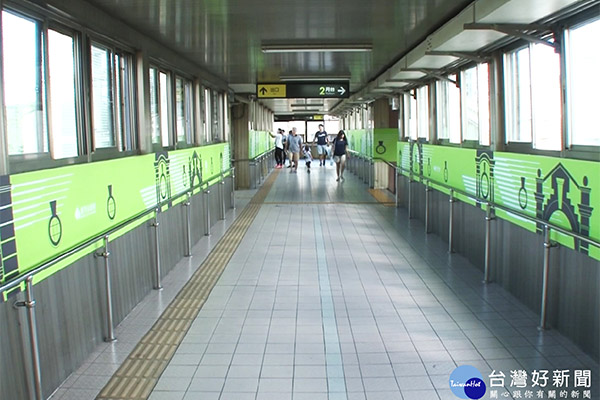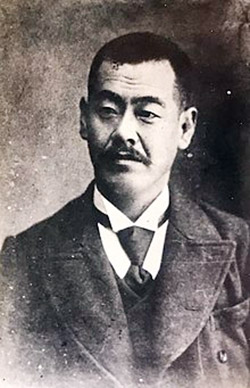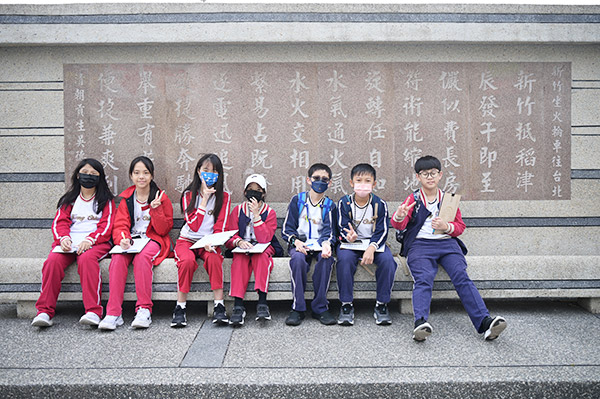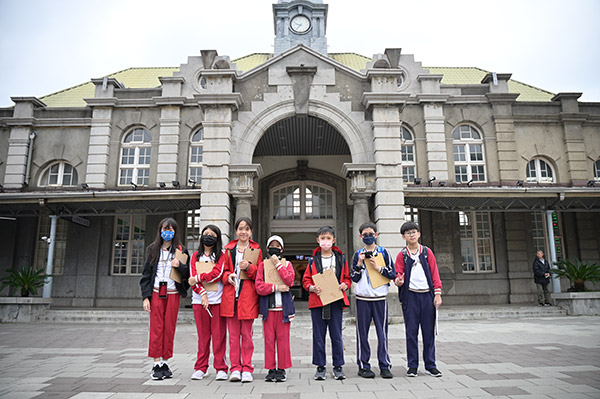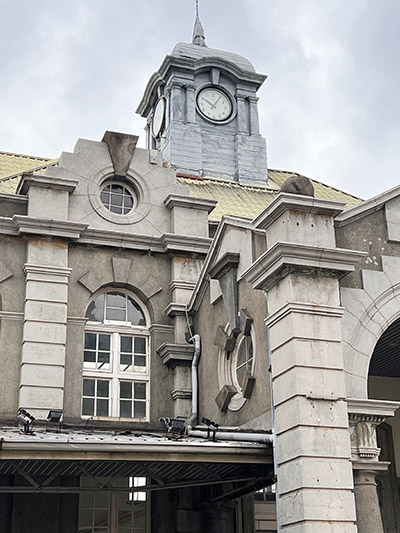photo by here
▪Pedigree
In 1885 , based on the needs of coastal defense, development and transportation, the governor of Taiwan, Liu Mingchuan, approved the construction of the Taiwan Railway to the Qing government in 1887. In 1893, the Keelung-Hsinchu Railway was completed, and the Hsinchu Box Office (Station) was set up at the foot of Pillow Mountain. At the beginning of the Meiji era, the Japanese railway team was in view of the winding and serpentine railways built during the Qing Dynasty.
Hsinchu Railway Station, located on Zhonghua Road, Hsinchu City, is the only railway station in Taiwan without signboards. The architectural style integrates Western architectural features, coupled with steep sloping double-folded roofs and dormer windows, and at the same time, in the columns, wall corners and openings and other places where structural stress is concentrated, strengthen the sense of solidity of the stone. This construction style presents a sense of complexity but yet not solemnity. The ideas from the designer made Hsinchu Station a household name to not only the Hsinchu locals but also the people in other cities. Also, it was listed as a historic site in 1998.
Hsinchu Train Station is the oldest active railway station in Taiwan, and it embraces the common memories shared by all the Hsinchu citizens. In 107, the Hsinchu City Government improved the traffic in front of the station through the Hsinchu Station Landscape Project, and created a pedestrian walking area that can accommodate 1,500 people, a light-transparent weatherproof corridor and other human-oriented spaces, allowing passengers to step out of the station hall and leave a good first impression of Hsinchu City.
▪Presently
In 2023, the Hsinchu Grand Station Platform Plan is listed as a major national construction. It’s greatly hoped to focus on the restoration of old monuments and urban reconstruction. The Hsinchu Grand Station Platform Plan is to adopt a cross-station platform method to connect the front and rear stations in series, which can reproduce the elegance of Hsinchu Railway Station after completion, and can also stitch the front and rear stations and flip the city axis.
▪Devise
The architectural style combined Baroque style and German Gothic style, bringing a beautiful and elegant exotic atmosphere to the entire station. The thick red brick walls make the complex-designed building more solemn. The appearance of the renovation after World War II is different from the original design. different. It is the oldest active station building in Taiwan and is a national historic site. Comprehensive planning for the Hsinchu Grand Station Platform Plan is currently underway. The Hsinchu Railway Station building adopts the modern European architectural style of the early 20th century. The designer Matsuzaki Kamancho studied at the Technical University of Berlin in Germany and introduced the German modern architectural style to Taiwan for the first time. Hsinchu Station has become an important piece of modern architecture and art history in Taiwan. It is a testament to the characteristics of the construction technology schools of each era. In 1890, Taiwan Governor Liu Mingchuan planned the construction of Keelung-Hsinchu Road. At that time, there was a simple station in Hsinchu. The Hsinchu Railway Station building facade and train station used German-style ladder gables, and there were Bull's-eye windows and semi-circular arch windows, with a tall clock tower in the center and a copper-decorated spire, are common techniques in modern German architecture in the early 20th century.
photo by here
photo by our team
▪Features
Improvement of the square and pedestrian space in front of Hsinchu Railway Station. Each space is divided according to its attributes: "Old Locomotive - New Square Plaza", "Nostalgic Railway Area", "Station Square Area" and "Waterscape"; Hsinchu Railway Station The front square reorganizes the pedestrian space with the theme of "Old Locomotive, New Plaza" to form a sense of space and time, a clearly defined and interconnected pedestrian system, and construct a large public stage, with the historical building of Hsinchu Railway Station as the background, the railway Culture, old poems, and cultural maps are mixed with the touch of time in the space design. It emits beautiful light at night and has become a popular place for groups to perform live. The clear water of the nearby moat attracts groups of tourists to stroll here. The projection sculpture show of the 2021 Visit Art Festival is projected on the Hsinchu Railway Station, showing the artistic intersection of modern scientific civilization and historic buildings. The work also captures the flow of people and the surrounding landscape.
▪Change
Since Taiwan began to introduce international migrant workers in the 1990s, migrant workers have gradually appeared in Hsinchu Railway Station. However, the station square where migrant workers gather is about to undergo major renovations. The iron canopy that does not match the historic site will be demolished, and the pick-up and drop-off lane in front of the station will be changed into a "pedestrian square" 75 meters long and 15 meters wide. , significantly increasing pedestrian walking space, which can accommodate 1,500 people, and pedestrians no longer have to compete with cars for the road.
photo by our team
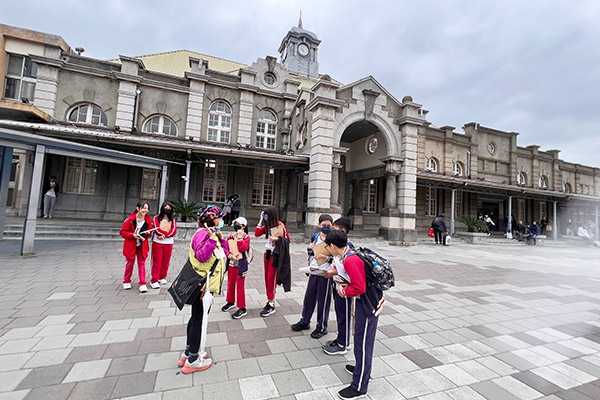
photo by our team

photo by our team
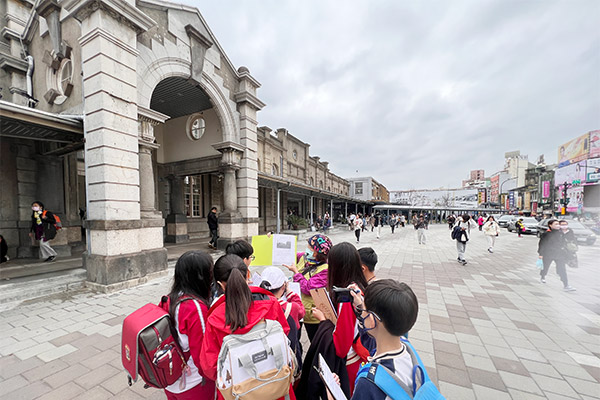
photo by our team
photo by our team
▪Field research
Hsinchu Railway Station is the most beautiful and oldest railway station in Taiwan. It was built in 1913 by Matsuzaki Mancho. At that time, watches or clocks were very expensive and could only be owned by wealthy people. The four-sided clock at the top of the train station was designed so that people from all directions could see the time. It also has a peculiar window - a bull's eye window and columns. It is in the Baroque style, and its door has an interesting name - the Arched Door. Matsuzaki Manchang has also designed Keelung Railway Station and Railway Hotel. Hsinchu Railway Station is the only station in Taiwan that does not have a station name. At that time, because the station name sign was repeatedly taken down and put back during the construction of the previous train station. Finally, it was decided not to put the station name on the sign.
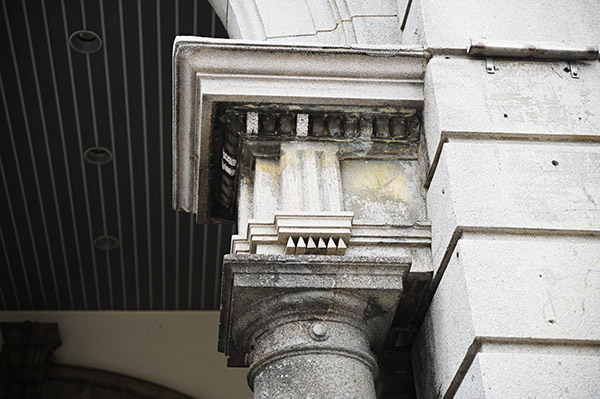
photo by our team
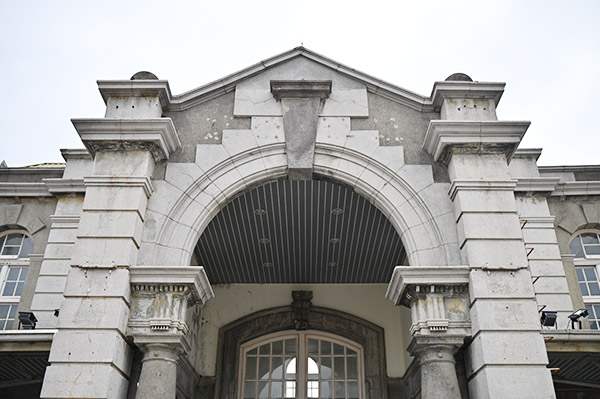
photo by our team
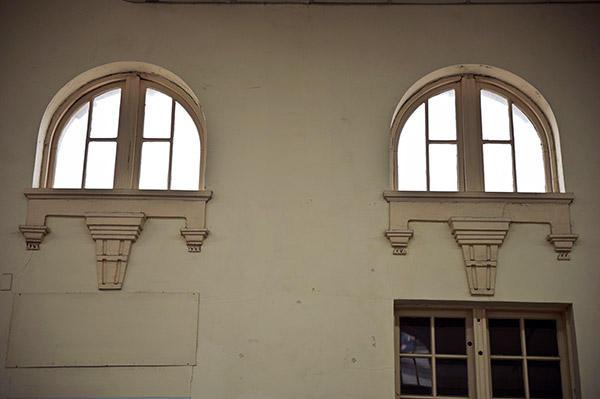
photo by our team
video by here
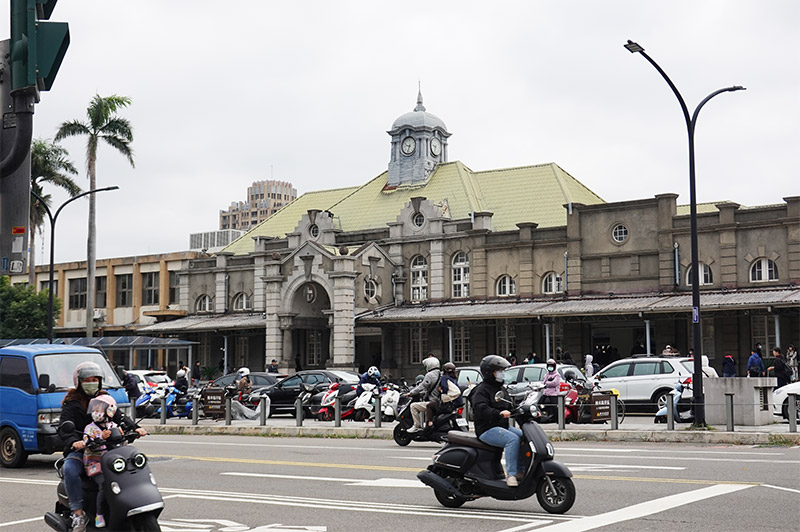
photo by our team
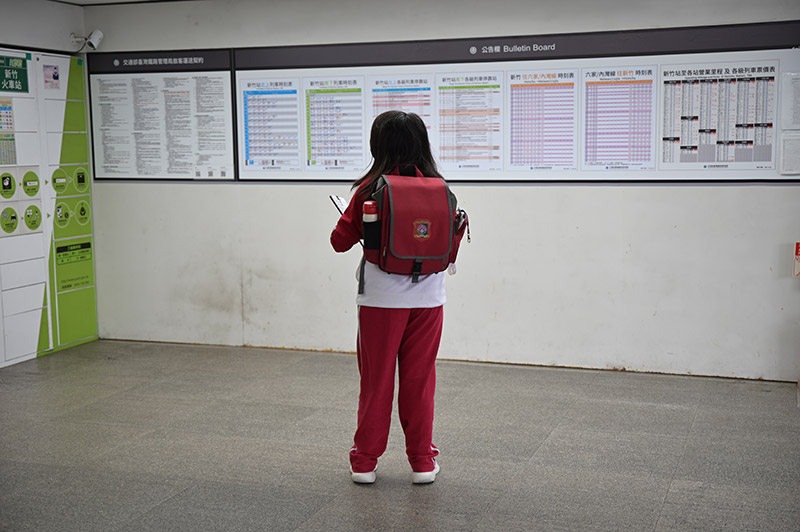
photo by our team
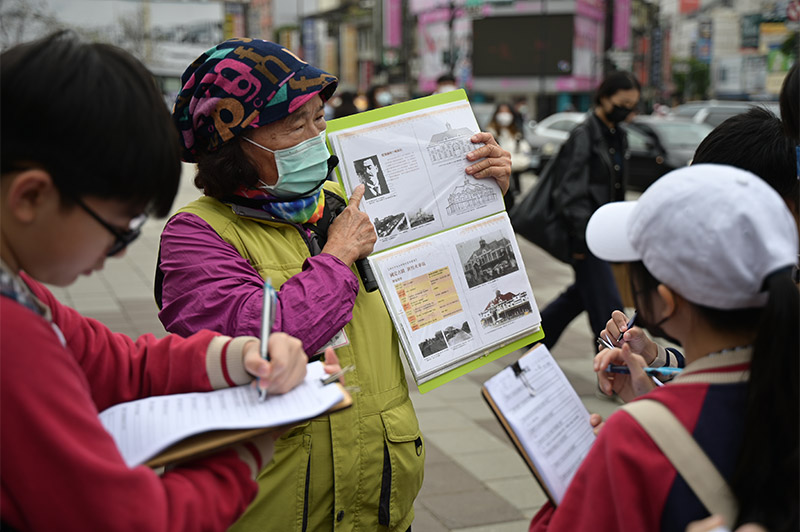
photo by our team

